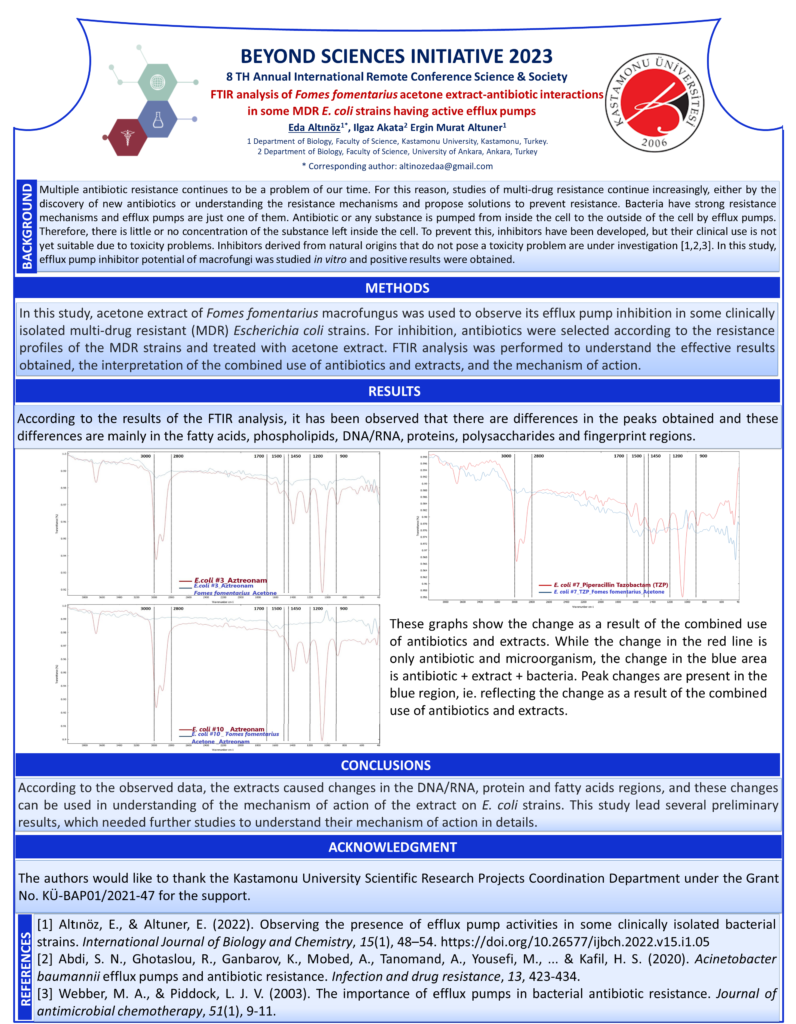Eda Altınöz
Conference 2023 Presentation
Project title
The FTIR analysis of Fomes fomentarius acetone extract-antibiotic interactions in some MDR E. coli strains having active efflux pumps
Authors and Affiliations
Eda Altınöz1, Ilgaz Akata2, Ergin Murat Altuner1
1. Department of Biology, Faculty of Science, University of Kastamonu, Kastamonu, Turkey
2. Department of Biology, Faculty of Science, University of Ankara, Ankara, Turkey
Abstract
Background
Multiple antibiotic resistance continues to be a problem of our time. For this reason, studies of multi-drug resistance continue increasingly, either by the discovery of new antibiotics or understanding the resistance mechanisms and propose solutions to prevent resistance. Bacteria have strong resistance mechanisms and efflux pumps are just one of them. Antibiotic or any substance is pumped from inside the cell to the outside of the cell by efflux pumps. Therefore, there is little or no concentration of the substance left inside the cell. To prevent this, inhibitors have been developed, but their clinical use is not yet suitable due to toxicity problems. Inhibitors derived from natural origins that do not pose a toxicity problem are under investigation. In this study, efflux pump inhibitor potential of macrofungi was studied in vitro and positive results were obtained.
Methods
In this study, acetone extract of Fomes fomentarius macrofungus was used to observe its efflux pump inhibition in some clinically isolated multi-drug resistant (MDR) Escherichia coli strains. For inhibition, antibiotics were selected according to the resistance profiles of the MDR strains and treated with acetone extract. FTIR analysis was performed to understand the effective results obtained, the interpretation of the combined use of antibiotics and extracts, and the mechanism of action.
Results
According to the results of the FTIR analysis, it has been observed that there are differences in the peaks obtained and these differences are mainly in the fatty acids, phospholipids, DNA/RNA, proteins, polysaccharides and fingerprint regions.
Conclusions
According to the observed data, the extracts caused changes in the DNA/RNA, protein and fatty acids regions, and these changes can be used in understanding of the mechanism of action of the extract on E. coli strains. This study lead several preliminary results, which needed further studies to understand their mechanism of action in details. Acknowledgment: The authors would like to thank the Kastamonu University Scientific Research Projects Coordination Department under the Grant No. KÜ-BAP01/2021-47 for the support.

